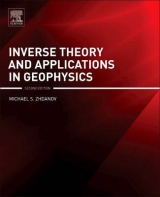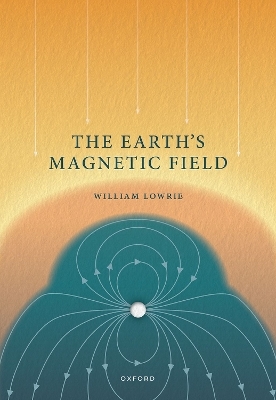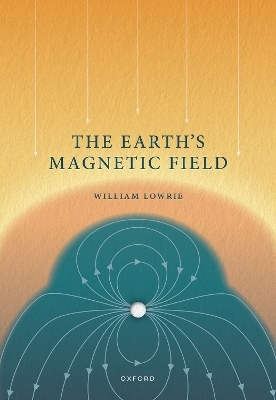
Geophysical Inverse Theory and Regularization Problems
Elsevier Science Ltd (Verlag)
978-0-444-51089-1 (ISBN)
- Titel erscheint in neuer Auflage
- Artikel merken
This book presents state-of-the-art geophysical inverse theory developed in modern mathematical terminology. The book brings together fundamental results developed by the Russian mathematical school in regularization theory and combines them with the related research in geophysical inversion carried out in the West. It presents a detailed exposition of the methods of regularized solution of inverse problems based on the ideas of Tikhonov regularization, and shows the different forms of their applications in both linear and nonlinear methods of geophysical inversion. This text is the first to treat many kinds of inversion and imaging techniques in a unified mathematical manner.The book is divided in five parts covering the foundations of the inversion theory and its applications to the solution of different geophysical inverse problems, including potential field, electromagnetic, and seismic methods. The first part is an introduction to inversion theory. The second part contains a description of the basic methods of solution of the linear and nonlinear inverse problems using regularization. The following parts treat the application of regularization methods in gravity and magnetic, electromagnetic, and seismic inverse problems. The key connecting idea of these applied parts of the book is the analogy between the solutions of the forward and inverse problems in different geophysical methods. The book also includes chapters related to the modern technology of geophysical imaging, based on seismic and electromagnetic migration.This volume is unique in its focus on providing a link between the methods used in gravity, electromagnetic, and seismic imaging and inversion, and represents an exhaustive treatise on inversion theory.
Dr. Michael Zhdanov is a distinguished professor in the Department of Geology and Geophysics at the University of Utah in Salt Lake City, USA, and the director of the Consortium for Electromagnetic Modeling and Inversion (CEMI). He is also the founder and CEO of TechnoImaging LLC. Dr. Zhdanov is a leading expert in the field of theoretical and applied geophysics and is the author of more than 400 papers, including more than 15 monographs published in English, Russian, and Chinese, and holds more than two dozen patents. Professor Zhdanov is a full member of the Russian Academy of Natural Sciences, a fellow of the Electromagnetics Academy, USA, and a senior member of IEEE. He received one of the highest awards of the International Society of Exploration Geophysicists, an honorary membership award, in recognition of his distinguished contributions to exploration geophysics and to the advancement of the profession.
Preface. I. Introduction to Inversion Theory.1. Forward and inverse problems in geophysics. 1.1 Formulation of forward and inverse problems for different geophysical fields. 1.2 Existence and uniqueness of the inverse problem solutions. 1.3 Instability of the inverse problem solution. 2. Ill-posed problems and the methods of their solution. 2.1 Sensitivity and resolution of geophysical methods. 2.2 Formulation of well-posed and ill-posed problems. 2.3 Foundations of regularization methods of inverse problem solution. 2.4 Family of stabilizing functionals. 2.5 Definition of the regularization parameter. II. Methods of the Solution of Inverse Problems.3. Linear discrete inverse problems.3.1 Linear least-squares inversion.3.2 Solution of the purely under determined problem.3.3 Weighted least-squares method.3.4 Applying the principles of probability theory to a linear inverse problem.3.5 Regularization methods.3.6 The Backus-Gilbert method.4. Iterative solutions of the linear inverse problem.4.1 Linear operator equations and their solution by iterative methods.4.2 A generalized minimal residual method.4.3 The regularization method in a linear inverse problem solution.5. Nonlinear inversion technique.5.1 Gradient-type methods.5.2 Regularized gradient-type methods in the solution of nonlinear inverse problems.5.3 Regularized solution of a nonlinear discrete inverse problem.5.4 Conjugate gradient re-weighted optimization.III. Geopotential Field Inversion.6. Integral representations in forward modeling of gravity and magnetic fields.6.1 Basic equations for gravity and magnetic fields.6.2 Integral representations of potential fields based on the theory of functions of a complex variable.7. Integral representations in inversion of gravity and magnetic data.7.1 Gradient methods of gravity inversion.7.2 Gravity field migration.7.3 Gradient methods of magnetic anomaly inversion.7.4 Numerical methods in forward and inverse modeling.IV. Electromagnetic Inversion. 8. Foundations of electromagnetic theory. 8.1 Electromagnetic field equations. 8.2 Electromagnetic energy flow. 8.3 Uniqueness of the solution of electromagnetic field equations. 8.4 Electromagnetic Green's tensors. 9. Integral representations in electromagnetic forward modeling. 9.1 Integral equation method. 9.2 Family of linear and nonlinear integral approximations of the electromagnetic field. 9.3 Linear and non-linear approximations of higher orders. 9.4 Integral representations in numerical dressing. 10. Integral representations in electromagnetic inversion. 10.1 Linear inversion methods. 10.2 Nonlinear inversion. 10.3 Quasi-linear inversion. 10.4 Quasi-analytical inversion. 10.5 Magnetotelluric (MT) data inversion. 11. Electromagnetic migration imaging. 11.1 Electromagnetic migration in the frequency domain. 11.2 Electromagnetic migration in the time domain. 12. Differential methods in electromagnetic modeling and inversion. 12.1 Electromagnetic modeling as a boundary-value problem. 12.2 Finite difference approximation of the boundary-value problem. 12.3 Finite element solution of boundary-value problems. 12.4 Inversion based on differential methods. V. Seismic Inversion.13. Wavefield equations. 13.1 Basic equations of elastic waves. 13.2 Green's functions for wavefield equations. 13.3 Kirchhoff integral formula and its analogs. 13.4 Uniqueness of the solution of the wavefield equations. 14. Integral representations in wavefield theory. 14.1 Integral equation method in acoustic wavefield analysis. 14.2 Integral approximations of the acoustic wavefield. 14.3 Method of integral equations in vector wavefield analysis. 14.4 Integral approximations of the vector wavefield. 15. Integral representations in wavefield inversion. 15.1 Linear inversion methods. 15.2 Quasi-linear inversion. 15.3 Nonlinear inversion. 15.4 Principles of wavefield migration. 15.5 Elastic field inversion. A. Functional spaces of geophysical models and data. A.1 Euclidean space. A.2 Metric space. A.3 Linear vector spaces. A.4 Hilbert spaces. A.5 Complex Euclidean and Hilbert spaces. A.6 Examples of linear vector spaces. B. Operators in the spaces of models and data. B.1 Operators in functional spaces. B.2 Linear operators. B.3 Inverse operators. B.4 Some approximation problems in the Hilbert spaces of geophysical data. B.5 Gram - Schmidt orthogonalization process. C. Functionals in the spaces of geophysical models. C.1 Functionals and their norms. C.2 Riesz representation theorem. C.3 Functional representation of geophysical data and an inverse problem. D. Linear operators and functionals revisited. D.1 Adjoint operators. D.2 Differentiation of operators and functionals. D.3 Concepts for variational calculus. E. Some formulae and rules from matrix algebra. E.1 Some formulae and rules of operation on matrices. E.2 Eigenvalues and eigenvectors. E.3 Spectral decomposition of a symmetric matrix. E.4 Singular value decomposition (SVD). E.5 The spectral Lanczos decomposition method. F. Some formulae and rules from tensor calculus. F.1 Some formulae and rules of operation on tensor functions. F.2 Tensor statements of the Gauss and Green's formulae. F.3 Green's tensor and vector formulae for Lamé and Laplace operators.Bibliography. Index.
| Erscheint lt. Verlag | 24.4.2002 |
|---|---|
| Verlagsort | Oxford |
| Sprache | englisch |
| Maße | 216 x 279 mm |
| Gewicht | 1520 g |
| Themenwelt | Naturwissenschaften ► Geowissenschaften ► Geophysik |
| ISBN-10 | 0-444-51089-3 / 0444510893 |
| ISBN-13 | 978-0-444-51089-1 / 9780444510891 |
| Zustand | Neuware |
| Haben Sie eine Frage zum Produkt? |
aus dem Bereich



